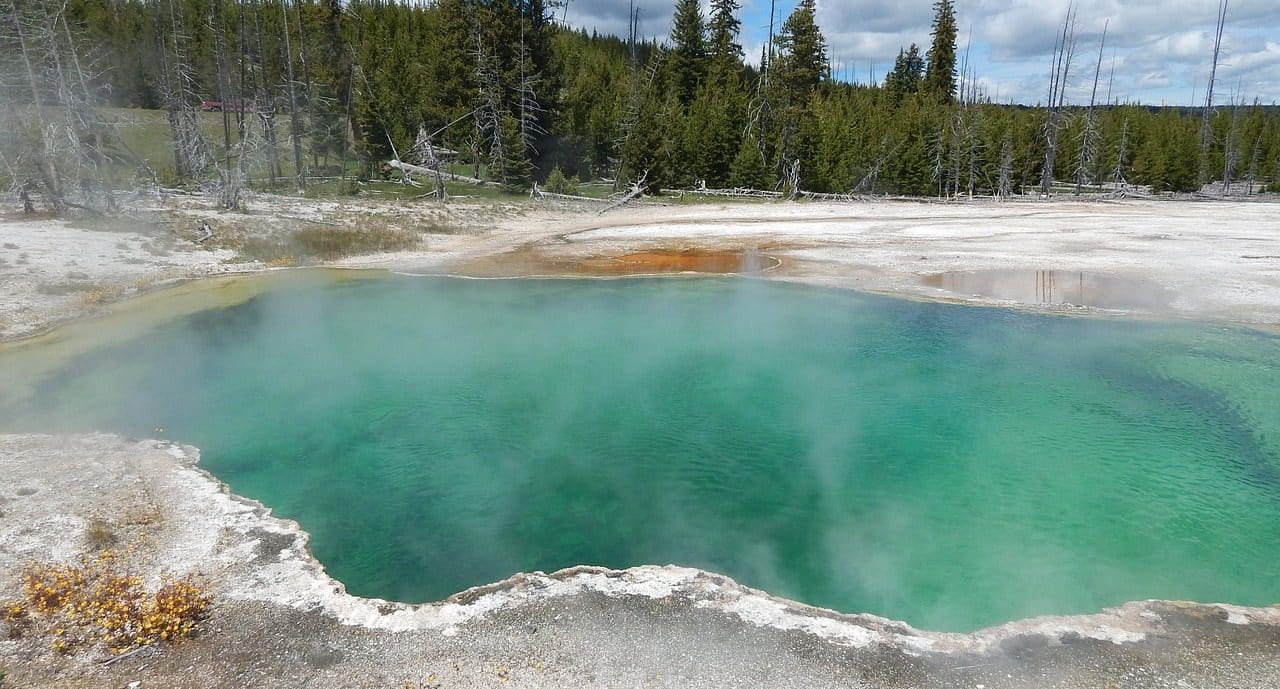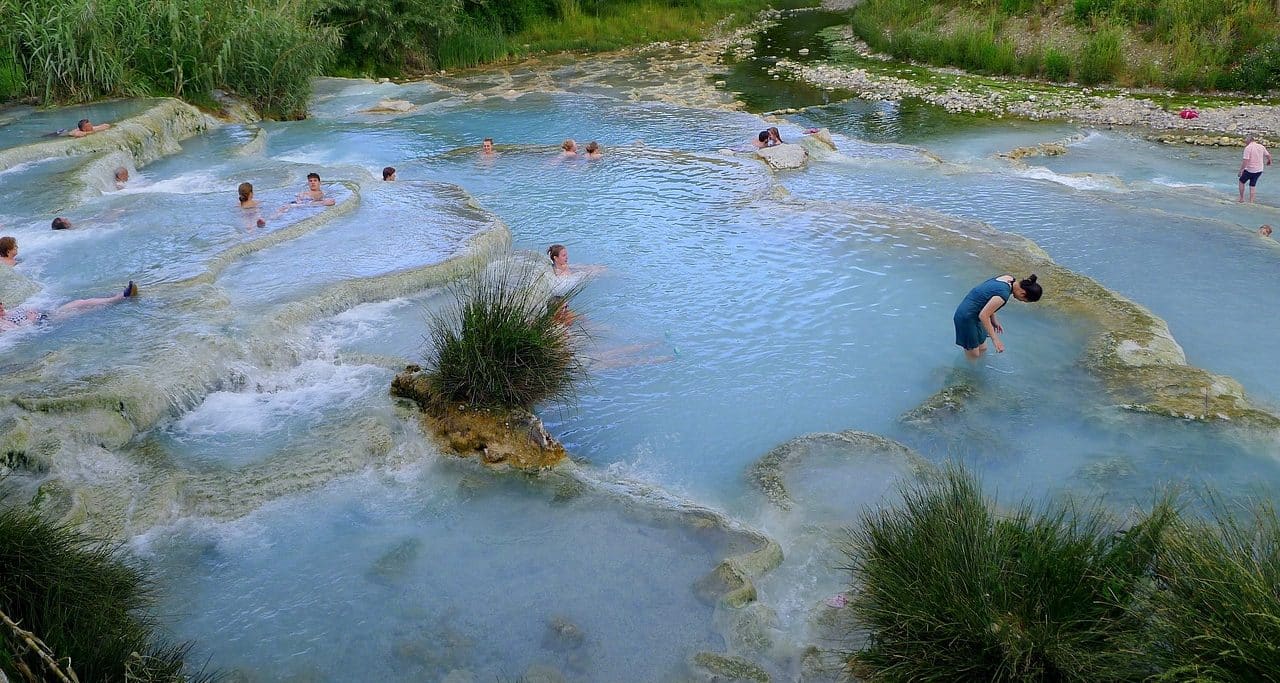
Thermal waters are characterized by their high temperature and high mineral content.
Thermal waters are waters with a high amount of minerals that spring from the ground naturally and at a temperature that exceeds the temperature recorded on the surface by 5°C . These waters have their origin in the underground strata of the planet and that is why they are warm, something that differentiates them from sea or river water.
Many times hot springs are located in the zone of geological faults : underground waters penetrate through these faults and, as they reach greater depths, they heat up. Then they return to hotter surface areas or even as steam .
Types of hot springs
According to the minerals they include, hot springs can be classified differently. In this sense we can speak of sulphurous waters (with a high sulfur index), chlorinated waters (which include chlorine) and ferruginous waters (have iron), among others.
Regarding their temperature , there are superthermal waters (which are more than 100°C), hyperthermal waters (between 45°C and 100°C), mesothermal waters (from 35°C to 45°C), hypothermal waters ( between 20°C and 35°C) and others.

Hot springs provide various health benefits.
Therapeutic properties
The mineralization of the water and its temperature make hot springs considered therapeutic . Many specialists claim that bathing in hot springs helps minimize various ailments and helps combat stress . That is why it is common for tourist centers to be built around the hot springs, with hotels, restaurants, etc.
Argentina, Colombia, Ecuador, Spain, USA, Mexico y Uruguay son algunos de los countries que cuentan con complejos de aguas termales.
Benefits of hot springs
As mentioned above, hot springs are famous for the benefits they can give us in caring for our health , both to prevent different disorders and to treat others. However, despite the many advantages that bathing in them may have, it is important to know that excess or inappropriate practices can have negative consequences, such as low blood pressure and dizziness.
Regarding the ways in which thermal waters are used to take advantage of their healing properties , baths are the most normal, although they are also used to heat environments, they can be inhaled and irrigated. It is important to mention that the healing of diseases with the help of these waters is not something typical of our time: since 2000 BC. C. There is evidence of its use by ancient civilizations for this and other purposes, such as promoting social relationships.
Its effects
The effects that hot springs cause on the human body can be divided into three groups, although they all take place simultaneously: biological, chemical and physical . Bathing in them increases body temperature, eliminates viruses and germs, increases hydrostatic pressure, oxygenation and blood circulation , thereby promoting the dissolution and elimination of toxins.
By increasing oxygenation it also causes the tissues to feed more efficiently, collaborates with the metabolism and stimulates the secretions of the liver and stomach, with the consequent improvement of the digestive process .
Repeating baths in thermal waters over several weeks can result in the normalization of endocrine functions and the general performance of the nervous system . On the other hand, it is known that the immune system also perceives benefits, such as a greater production of endorphins, the regularization of glandular functions and mental relaxation ideal for facing the difficulties of adult life.
With the help of periodic baths in thermal waters, especially those that contain sulfur , it is possible to combat certain skin diseases, including fungi, dermatitis and psoriasis . The healing of wounds and other skin injuries is also enhanced thanks to these treatments .
